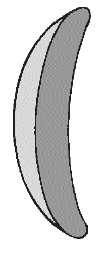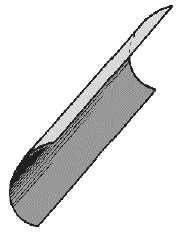3-8
Figure 3-6.—Orange-peel paraboloid.
Cylindrical Paraboloid
When a beam of radiated energy that is noticeably wider in one cross-sectional dimension than in
another is desired, a cylindrical paraboloidal section which approximates a rectangle can be used. Figure
3-7 illustrates such an antenna. A PARABOLIC CYLINDER has a parabolic cross section in just one
dimension which causes the reflector to be directive in one plane only. The cylindrical paraboloid
reflector is fed either by a linear array of dipoles, a slit in the side of a waveguide, or by a thin waveguide
radiator. It also has a series of focal points forming a straight line rather than a single focal point. Placing
the radiator, or radiators, along this focal line produces a directed beam of energy. As the width of the
parabolic section is changed, different beam shapes are obtained. You may see this type of antenna
system used in search radar systems and in ground control approach (gca) radar systems.
Figure 3-7.—Cylindrical paraboloid.
Corner Reflector
The CORNER-REFLECTOR ANTENNA consists of two flat conducting sheets that meet at an
angle to form a corner, as shown in figure 3-8. The corner reflector is normally driven by a HALF-WAVE
RADIATOR located on a line which bisects the angle formed by the sheet reflectors.




